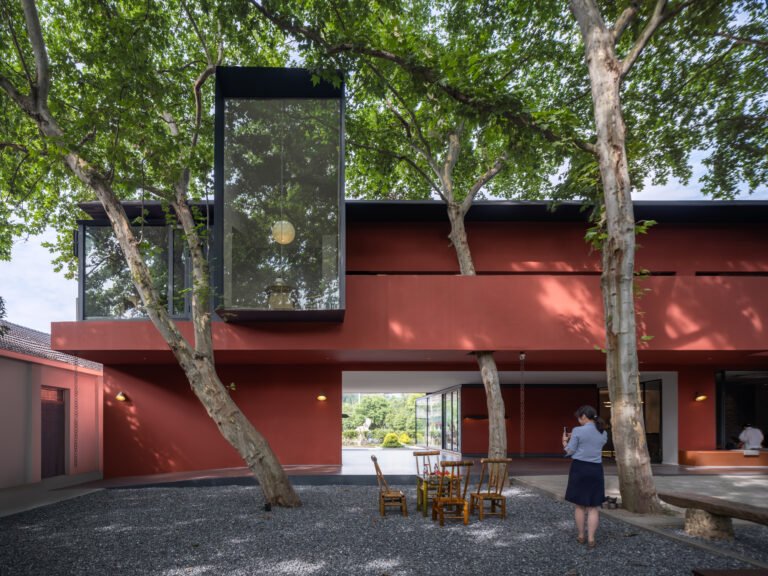7 Pet-Friendly Accommodation Ideas for Your Fur Baby
A pet—whether it’s a dog, cat, or another cuddly creature—is an integral part of your home. It makes perfect sense, then, to think about pet-friendly accommodation ideas as you design the interiors. “If we have kids, we take them into consideration when we’re planning our spaces, and it’s no different with pets,” says Brittany Marom, a New York–based designer, founder of her namesake design firm, and pet parent to a wirehaired vizsla. “You can have a pet-friendly setup that’s chic and functional at the same time.”
Case in point: Marom recently designed a kitchen for a Manhattan client with limited space. “Having a dog bowl [on the floor] that they constantly knocked into was just not going to work,” she says. “Instead, we took what would normally be a drawer space under the kitchen countertop and created an eating nook for their dog.”
Here, you can find seven pet-friendly accommodation ideas that are as functional as they are fashionable. See how designers play up interiors with pets in mind.
1. Consider a dog bath
Marom says that she is increasingly incorporating dog baths into home design because they’re the ideal way to keep your pup and your personal tub clean. “There is nothing worse than having to clean your bathtub after your muddy dog,” she notes, pointing out the task is especially annoying in a household with children who might share the same tub hours later. Marom recently designed a dog bath clad in Moroccan tiles on the walls and a dog bone–shaped wood shelf to hold the pup’s shampoo and brushes. “Dog baths are an opportunity to have fun with a space,” she adds.
2. Give your pet a room of their own
Shannon Eddings, a designer based in Austin, likes carving out a dedicated space for pets in her client’s homes. “They should have their own area that they can retreat to,” she says. “It makes them feel that much more a part of the family.” For a family with a cat, for instance, Eddings set aside a part of their mud room for his litter box. When designing kitty litter space, use a material that you can wipe, such as an eggshell paint finish or vinyl, so that any spilled kitty litter can be cleaned up and vacuumed easily. Also, create a cute spot, such as a round peek hole, for the cat to enter and exit. “It’s a clever way to conceal something not so pleasant but also allow for cute moments with the cat peeking to say hello,” Eddings says.
3. Match pet accessories to your home decor
For chic interiors, choose pet accessories that blend in seamlessly with your home decor, says Anastasia Casey, the founder of Austin-based the Identité Collective, a creative agency for interior designers. “If you coordinate those pet toys, beds, and feeding bowls with the overall style of your house, they look like they’re a natural fit instead of sticking out,” she says. “You could have a sleek silver feeding bowl, for example, to match a contemporary kitchen.” Casey says that she recently ordered her pup a neutral-colored dog bed to integrate with the soft tones in her home. “The brown microfiber version stood out, but my new one looks like it belongs there.” You can also go all out and seek a pet couch that looks like something you might sprawl out on. Feline lovers can choose a shelf that doubles as a sleek obstacle course.
4. Opt for chic toy storage
Don’t let an abundance of pet toys mess with your interiors. Instead of resorting to basic wicker baskets, you can designate a cabinet for squeeze toys, felt mice, and activity balls that will entertain rabbits and guinea pigs. Look for something with multiple compartments, like this Article media unit, that is well suited for adding in small storage baskets, but won’t be sore on the eyes.
5. Choose the right carpets
When it comes to rugs, avoid anything with loops because cats love digging their claws into it and snagging the material. New York–based designer Philip Thomas says to opt for colors, textures, and fibers that are easy to clean and maintain, especially if you have a home-bound bunny. Lighter colors are likely to show stains than darker hues. Woven rugs with a visual texture like herringbone, chenille, or felt are much more resilient, and they will help hide a stain because of their dimensionality. Multi-colored area rug patterns are also good for hiding pet hair. Thomas is a fan of natural wool and man-made polypropylene carpets because they’re durable yet aesthetically appealing.
6. Decorate with the right greenery
Consider your furry friends when deciding on plants, as some are not pet compatible—for instance, most lilies are highly toxic to cats. Pet-friendly houseplants for cats and dogs include Calathea orbifolia, spider plants, Haworthia, and African violet. When it comes to choosing planters, select ceramic and terra-cotta. Planter baskets and anything made of wicker can be too tempting for pets who love to chew and scratch.
7. Pick pet-friendly fabrics
The purpose of having a pet, according to Rudy Saunders, an interior designer from Dorothy Draper & Company, is to live with them and not banish them where everyone hangs out, like the family room couch. “Durable fabric is key to having a pet welcome everywhere in your home,” he says. He recommends a high-performance fabric for upholstered pieces, such as Perennials luxury fabrics, which are resistant to stains and can be washed with water and soap. For all soft materials, Saunders says to use a fabric defense spray. “It will protect the material and give you peace of mind,” he says. Saunders adds that most carpet cleaning companies can apply a stain treatment to upholstery.



